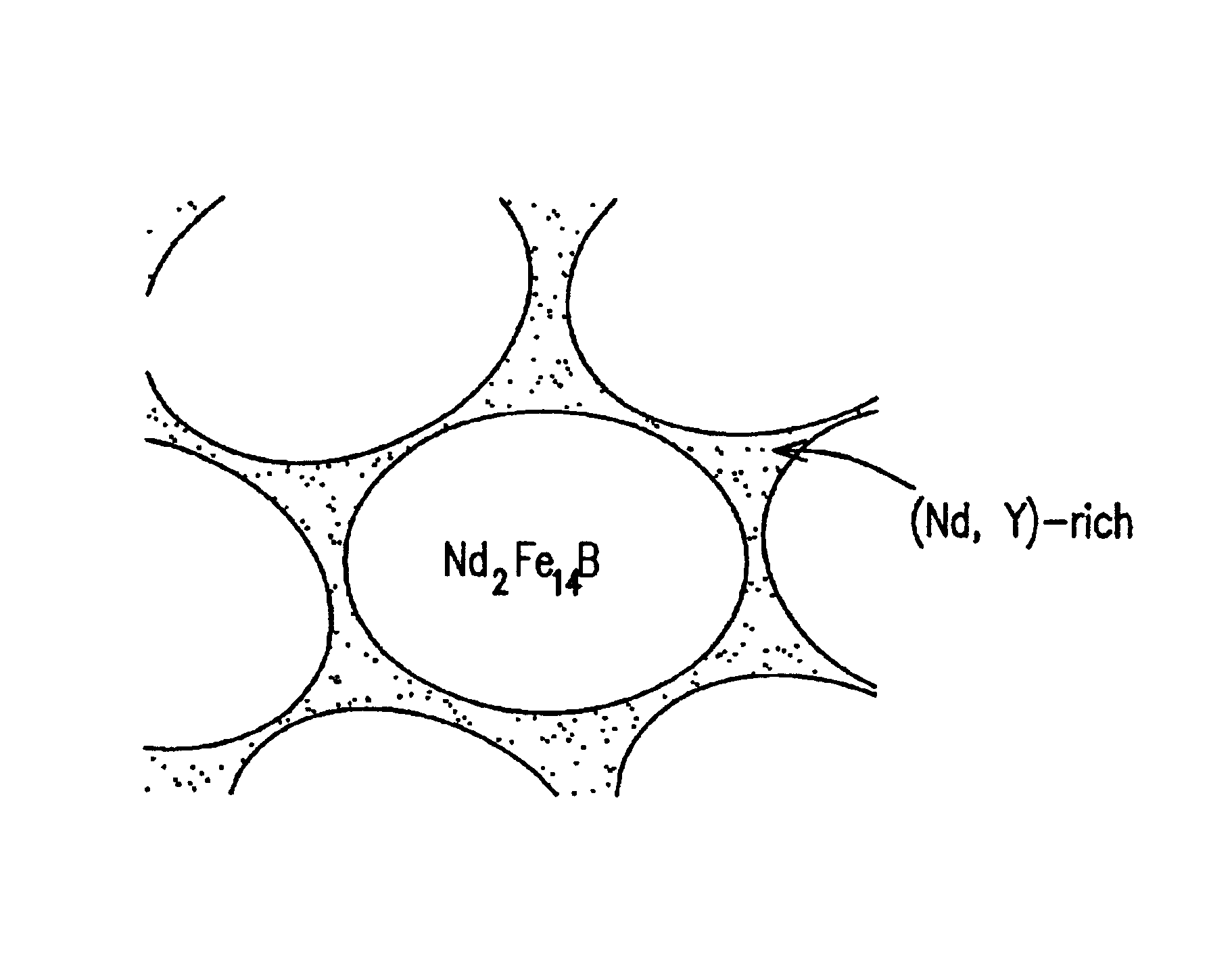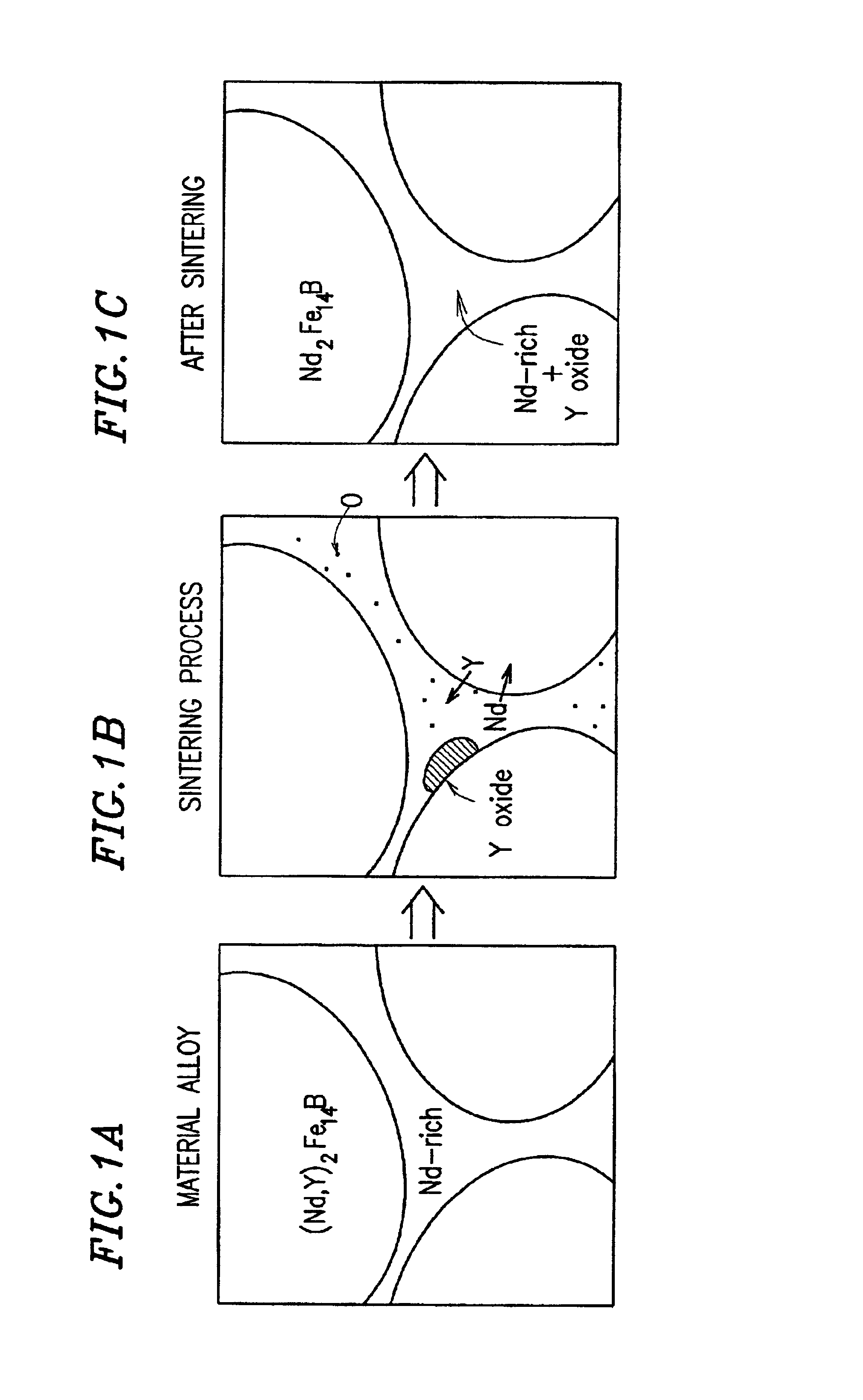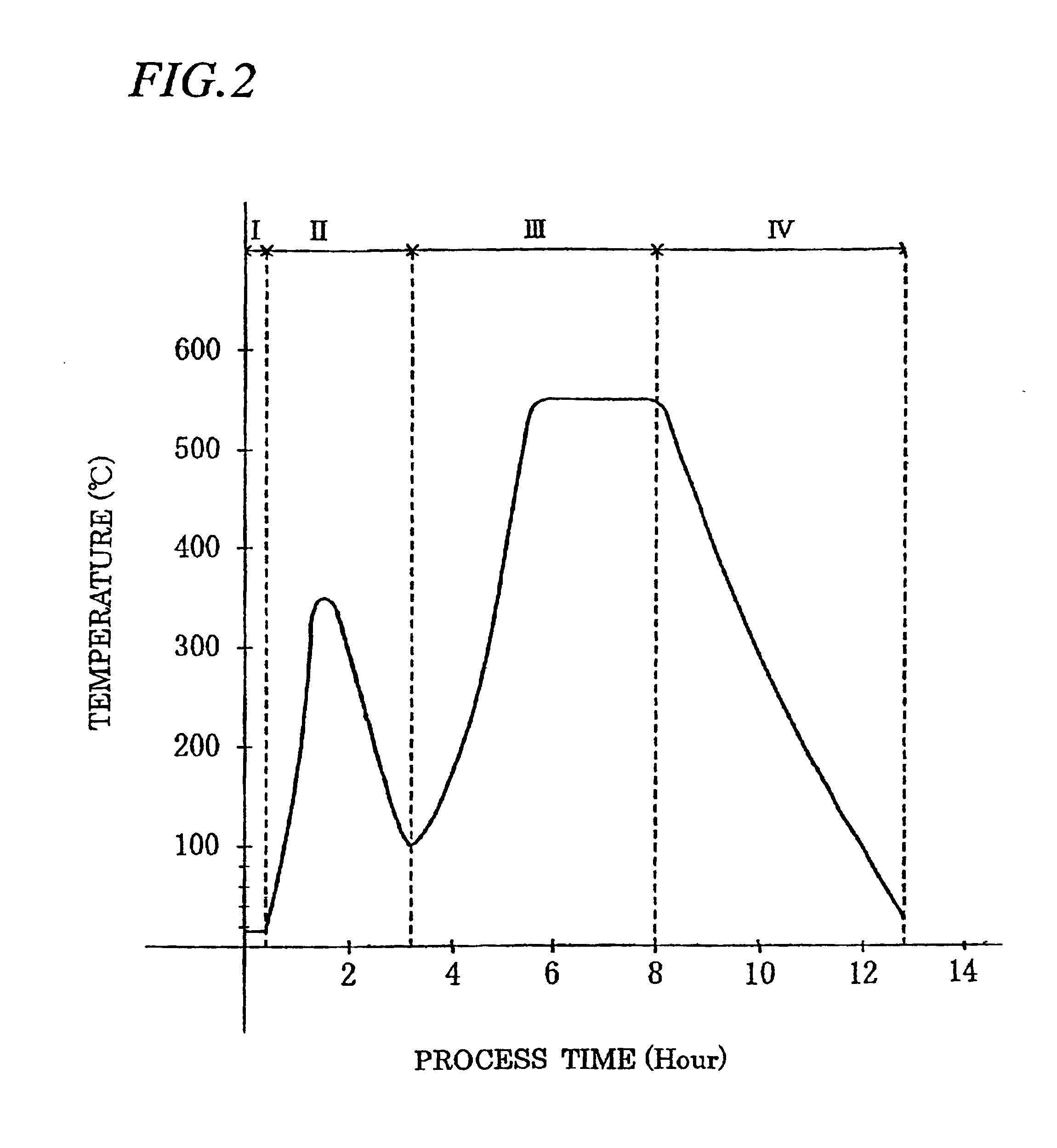Rare-earth sintered magnet and method of producing the same
a rare earth magnet and rare earth technology, applied in the field can solve the problems of insufficient heat resistance of rare earth magnets, inability to realize inability to achieve the effect of realizing the effect of magnetization,
- Summary
- Abstract
- Description
- Claims
- Application Information
AI Technical Summary
Benefits of technology
Problems solved by technology
Method used
Image
Examples
embodiment 2
[0100]A second embodiment of the present invention will now be described. In the present embodiment, Y, La and / or Sc are added, in addition to Nd and / or Pr, and these elements are concentrated in a grain boundary phase, so that an amount of a transition metal such as Co that would otherwise be consumed for the formation of a ferromagnetic compound in the grain boundary phase is taken into the main phase crystal grains. In this way, Fe in the main phase (Nd2Fe14B phase) providing hard magnetism is efficiently substituted with Co, etc.
[0101]If Co is added in the present invention, a large amount of Co is present in the Nd2Fe14B phase, which is the main phase. In contrast, if, as in the prior art, Co is added in large amounts without adding Y, La or Sc, a large amount of Co is present also in the grain boundary phase, thereby forming a ferromagnetic compound in the grain boundary phase. As described above, when a large amount of a ferromagnetic compound such as NdCo2 is formed in the g...
example
[0144]An example of the second embodiment of the present invention will now be described.
[0145]In this example, various material alloy compositions represented by (R1x+R2y)(T1p+T2q) 100-x-y-z-rQzMr were prepared, where R1 is Nd and Dy, R2 is Y (Yttrium), T1 is Fe, T2 is Co, Q is B (boron), and M is Cu and Al. Each composition was adjusted so as to contain 5 to 10 at % of Nd, 4 at % of Dy, 0 to 5 at % of Y, 0 to 6 at % of Co, 6 at % of B, 0.2 at % of Cu, and 0.4 at % of Al, with the balance being the amount of Fe.
[0146]Each alloy composition was heated to about 1400° C. in an Ar atmosphere to obtain a molten alloy, and the molten alloy was poured into a water-cooled mold. The molten alloy was cooled to obtain a solidified alloy having a thickness of about 5 mm.
[0147]After the solidified alloy was allowed to occlude hydrogen, it was heated to about 600° C. while evacuating the atmosphere so as to be embrittled (hydrogen pulverization process). A coarsely pulverized powder was obtained...
PUM
| Property | Measurement | Unit |
|---|---|---|
| temperature | aaaaa | aaaaa |
| particle size | aaaaa | aaaaa |
| size | aaaaa | aaaaa |
Abstract
Description
Claims
Application Information
 Login to View More
Login to View More - R&D Engineer
- R&D Manager
- IP Professional
- Industry Leading Data Capabilities
- Powerful AI technology
- Patent DNA Extraction
Browse by: Latest US Patents, China's latest patents, Technical Efficacy Thesaurus, Application Domain, Technology Topic, Popular Technical Reports.
© 2024 PatSnap. All rights reserved.Legal|Privacy policy|Modern Slavery Act Transparency Statement|Sitemap|About US| Contact US: help@patsnap.com










